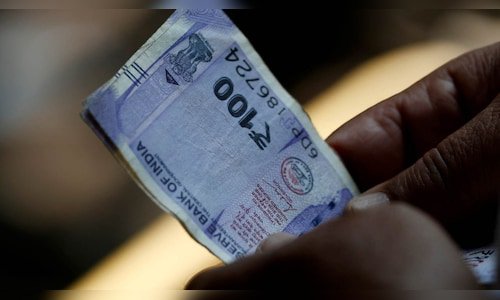- EUR/USD trades firmly near 1.1570 as the US Dollar faces pressure after the release of the US NFP data for July.
- Soft employment data and questions over US data creditability have weighed on the US Dollar.
- The Eurozone inflation grew at a steady pace in July.
The EUR/USD pair clings to Friday’s gains near 1.1570 during the late Asian session on Monday. The major currency pair trades firmly as the US Dollar (USD) has been pushed to the backfoot, following questions over the credibility of the United States (US) data agencies.
The US Dollar Index (DXY), which tracks the Greenback’s value against six major currencies, trades with caution near 98.70.
On Friday, US President Donald Trump fired Bureau of Labor Statistics (BLS) Commissioner Erike McEntarfer, who was accused for faking job numbers, without providing evidence of tampering data. This came after the agency reported the Nonfarm Payrolls (NFP) report for July, which showed a slowdown in the hiring trend.
The US NFP report showed that employers added 73K fresh workers in July, lower than expectations of 110K. Additionally, employment figures for June revised significantly lower to 14K from 147K. The Unemployment Rate accelerated to 4.2%, as expected, from the prior reading of 4.1%.
Cooling labor market conditions and suspects over US data credibility have diminished the appeal of the US Dollar.
Going forward, investors will focus on the US ISM Services PMI data for July, which will be published on Tuesday.
In the Eurozone, a steady growth in the preliminary Harmonized Index of Consumer Prices (HICP) data for July has diminished hopes of more interest rate cuts by the European Central Bank (ECB) in the near term. The data showed on Friday that both headline and core HICP rose steadily by 2.0% and 2.2% on year, respectively, slightly faster than their estimates.
US Dollar FAQs
The US Dollar (USD) is the official currency of the United States of America, and the ‘de facto’ currency of a significant number of other countries where it is found in circulation alongside local notes. It is the most heavily traded currency in the world, accounting for over 88% of all global foreign exchange turnover, or an average of $6.6 trillion in transactions per day, according to data from 2022.
Following the second world war, the USD took over from the British Pound as the world’s reserve currency. For most of its history, the US Dollar was backed by Gold, until the Bretton Woods Agreement in 1971 when the Gold Standard went away.
The most important single factor impacting on the value of the US Dollar is monetary policy, which is shaped by the Federal Reserve (Fed). The Fed has two mandates: to achieve price stability (control inflation) and foster full employment. Its primary tool to achieve these two goals is by adjusting interest rates.
When prices are rising too quickly and inflation is above the Fed’s 2% target, the Fed will raise rates, which helps the USD value. When inflation falls below 2% or the Unemployment Rate is too high, the Fed may lower interest rates, which weighs on the Greenback.
In extreme situations, the Federal Reserve can also print more Dollars and enact quantitative easing (QE). QE is the process by which the Fed substantially increases the flow of credit in a stuck financial system.
It is a non-standard policy measure used when credit has dried up because banks will not lend to each other (out of the fear of counterparty default). It is a last resort when simply lowering interest rates is unlikely to achieve the necessary result. It was the Fed’s weapon of choice to combat the credit crunch that occurred during the Great Financial Crisis in 2008. It involves the Fed printing more Dollars and using them to buy US government bonds predominantly from financial institutions. QE usually leads to a weaker US Dollar.
Quantitative tightening (QT) is the reverse process whereby the Federal Reserve stops buying bonds from financial institutions and does not reinvest the principal from the bonds it holds maturing in new purchases. It is usually positive for the US Dollar.







